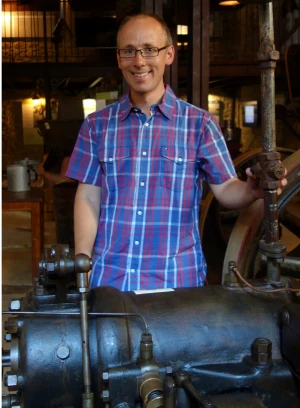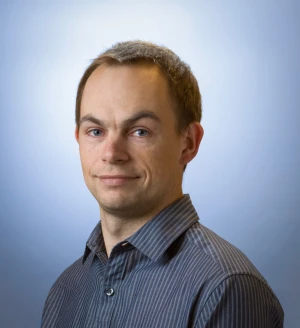-
Technical
Keynote Speakers & Short Course
Cooling and Heating Keynote Speaker
 Professor Eckhard Groll - the William E. and Florence E. Perry Head of Mechanical Engineering at Purdue University.
Professor Eckhard Groll - the William E. and Florence E. Perry Head of Mechanical Engineering at Purdue University.An award-winning international speaker, Eckhart is an acclaimed figure in the refrigeration, air-conditioning and heat pump (RACHP) industry. He is world-renowned for his research in fundamental thermal sciences as applied to advanced energy conversion systems, components, and their working fluids.
Presenting: Past, present and future of refrigeration: Pathways to the next-generation heating and cooling technologies
In a little over 150 years, the refrigeration industry, in its broad meaning of heating, cooling and refrigeration applications, profoundly impacted human daily activities. From ice harvesting during the 19th century, to initial research on artificial refrigeration done by W. Cullen, to well-known scientists, chemists and engineers B. Franklin, J. Hadley, J. Perkins, F. Carré, C. von Linde, among others, refrigeration technologies experienced transformational improvements whose fundamental principles are still in use nowadays. The “Miracle Substances” initially introduced by T. Midgley et al. in the 1930s, and then further developed to mitigate environmental concerns, enabled modern refrigeration and heat pumping systems, but also organic Rankine cycles for power generation from renewable and waste heat sources.
Despite the tremendous positive impacts on lifestyle, nutrition, personal comfort, healthcare and industrial and transportation activities in general, numerous challenges associated with the refrigeration industry are still open including the future use of working fluids, further increasing energy efficiency, developing sustainable technologies, and developing reliable and efficient energy storage.
This presentation will take delegates on a journey from an initial historical review of refrigeration to modern technologies with an emphasis on heating and cooling applications. Key aspects of vapour compression cycles, sorption systems, gas cycles, solid-state system and other “exotic” cycles will be highlighted to provide a perspective on potential research direction to design the next-generation heating, cooling and refrigeration technologies.
Refrigerants Keynote Speaker

Dr Mark O. McLinden- Research Chemical Engineer, National Institute of Standards and Technology
Mark joined the National Bureau of Standards in 1984, and his current research in the NIST Applied Chemicals and Materials Division focuses on highly accurate measurements of fluid properties over wide ranges of temperature and pressure and the design and fabrication of instruments for such measurements. Throughout his career, Dr McLinden has researched “new” refrigerants; in the 1990s replacements for the ozone-depleting CFC and HCFC refrigerants were the focus, and more recently, his attention has turned to fluids having low global warming potential (GWP). He is the author or co-author of more than 100 peer-reviewed publications. Dr McLinden holds a B.S. from the University of Missouri and M.S. and PhD degrees from the University of Wisconsin, all in chemical engineering.
Presenting: The (R)Evolution of refrigerants: How did we get here? Where are we going?
As we enter the “fourth generation” of refrigerants, this talk will consider the evolution of refrigerant molecules, the ever-changing constraints and regulations that have driven the need to consider new molecules, and the advancements in the tools and models used to identify new molecules and design the (also evolving) equipment to use them. These separate aspects are intimately intertwined and have been in more-or-less continuous development, even if sometimes out-of-sight of the mainstream refrigeration industry. R134a, for example, was first reported in the chemical literature in the 1930s, and the search for new refrigerants continued through the 1990s even as the HFCs were becoming the dominant refrigerants in commercial use. The current situation remains in flux—some applications have converged on a new technology (e.g., R1234yf in automotive air conditioning) while other sectors continue to weigh competing tradeoffs with no obvious “best” solution. It is almost certain that refrigerants will continue to evolve in the future, and it will be changing constraints that will drive this evolution. Future constraints could be relaxed (e.g., to allow more flammable fluids) or, perhaps, to allow a very small ODP in return for a much-reduced GWP; or they could become more stringent, drawing a wider “system boundary” on the environmental consequences of refrigerants to also include the inputs to their manufacture and/or the impact of their breakdown products on the environment.
Organic Rankine Cycle Keynote Speaker

Dr Vincent Lemort - Associate Professor, Thermodynamics Laboratory, University of Liège
Vincent Lemort obtained his PhD in 2008 from the University of Liège (ULiege). He has been a visiting scholar in Purdue University (USA) and in the Ecole des Mines of Paris. He is currently an Associate Professor at the Thermodynamics Laboratory of ULiege and he is leading the Energy Systems Research Group. His research and teaching activities deal with the modelling, the testing and the optimization of energy systems and more specifically displacement machines, small-scale Rankine cycle systems, heating, ventilation, air-conditioning and refrigeration systems. He has published more than 200 journal and conference papers on these topics. He has a strong background in working in collaboration with Industry but also in the frame of international research projects (among which IEA and FP7 projects). He is the Chairman of the International Conference on System Simulation in Buildings (SSB). He was the Scientific Chairman of the ASME Seminar on ORC Power systems in 2015. He is also an active member of the Engine ORC Consortium (EORCC).
Presenting: New trends and future prospects for the Organic Rankine Cycle power systems
In light of current societal needs and of successful (or not) past R&D and commercialization experiences, this keynote will propose a vision of new relevant trends and future prospects for the ORC power systems.
To start with, the current major markets for ORC technology will be described as well as their evolutions. Among others, the talk will address biomass CHP, industrial waste heat recovery and geothermal power plants. Criteria to consider when analyzing the deployment of the technology in given fields will be discussed, including regulations in force and available incentives.
New applications and potential emerging markets will then be presented, including waste heat recovery from engines and gas turbines and Carnot batteries.
Challenges associated with new and evolving markets will be pointed out and some technical solutions to cope with these challenges will be presented. Underlying research questions will be highlighted.
This talk also aims at showing the boundary crossing between vapour compression heat pump/refrigeration and ORC systems. Both sectors are sharing some features and challenges in terms of working fluids, technologies of component, system integration and control. From this crossing, but also from their particularities, results a large potential of parallel developments and associations of both sectors.
The Life and Legacy of William Rankine

Dr Helen Czerski, University College London
Helen is a physicist, first and foremost, but she’s acquired a few other labels along the way: oceanographer, presenter, author and bubble enthusiast. She runs her own research programme at University College London on physics of oceanic bubbles.
Image of Helen Czerski by Alex Brenner
Helen's enthusiasm and expertise have led to her role as a broadcaster which enables her to share her love of science with a larger audience. She has presented documentaries on a wide range of subjects relating to physics in general, and also atmospheric and ocean science. She is passionate about conveying the beauty and ingenuity of the physical world around us, and the perspective on the world that science provides. In addition to presenting, she is a writer and speaker, and also regularly hosts and chairs science events.
Presenting - Rankine’s legacy in Thermodynamics
Helen will give the keynote address during the special event that open the conference and celebrates the life and legacy of William Rankine.
Short Course: Flexible Cycle Modeling with Low-GWP Mixtures
Delivered by
Ian Bell, The National Institute of Standards and Technology

Dr.Bell’s research interests include computational routines and tools used for the development and application of thermodynamic mixture models. These mixture models are used in software tools like NIST REFPROP, a modelling tool widely used in the industry.
Davide Ziviani of Purdue University

Dr. Davide Ziviani is an Assistant Professor of Mechanical Engineering and serves as the Associate Director of the Center for High Performance Buildings (CHPB) at the Ray W. Herrick Laboratories, Purdue University. He has extensive background and expertise in the modeling and testing of thermal systems and their components, including conventional and advanced HVAC&R technologies for residential, commercial, and industrial applications as well as waste heat recovery and power generation systems. Dr. Ziviani serves as the Sub-Committee Research Chair of ASHRAE TC8.1 “Positive Displacement Compressors” and as the Chair of ASHRAE TC8.3 “Absorption and Heat Operated Machines”, and is a member of IIR Commission B2 for the U.S. In addition, he serves also as a member of the Board of the Knowledge Center on Organic Rankine Cycle (KCORC) foundation.
Course outline
The regulatory changes are requiring all systems to convert to low-GWP refrigerants over the coming years. To meet HFC phase-down proposals, the HVAC&R industry requires to optimize vapour compression systems with either natural refrigerants or low-GWP refrigerant mixtures. Vapour compression models are very useful tools to investigate the impact of new working fluids on system performance. In this workshop, a flexible vapour compression modelling platform will be introduced and a case study will be used to showcase modelling features as well as thermophysical properties. The modelling platform will also be employed to develop an organic Rankine cycle (ORC), model
Sitemap
-
Membership
-
Technical
-
Environment
-
Education
-
Quick Links - Education and Careers
-
Qualifications and Apprenticeships
-
IOR E-Learning programmes
-
Careers Information and Resources
-
How does a fridge work?
-
Find Local Training
-
Presidents Fund for Education
-
CPD Resources for Technicians
-
FantasticPuzzles
-
masterclasses
-
All things STEM resources, ambassadors and more
-
-
Networking
-
Events
-
About
-
Shop
-
